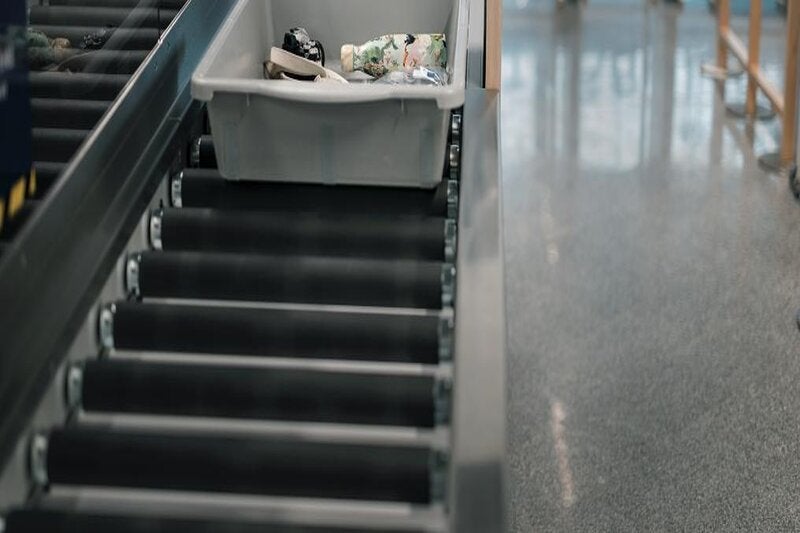
Finavia will start disinfecting security control trays with UVC light technology that kills bacteria and viruses. During the pilot project, equipment based on different technologies will be tested at a number of security control lines.
“Due to the COVID-19 pandemic, we already upgraded the cleaning process of security control trays during the spring, but the aim of the pilot project is to raise hygiene standards to a new level and find the best UVC disinfection method for the airport environment. Our expectations are high for the performance of the equipment we are piloting,” says Finavia’s Ulla Lettijeff, Helsinki Airport Executive Director
The disinfection technology tested at the airport is based on UVC light, used for the cleaning of surfaces in, among others, health care and the food industry. UVC effectively destroys bacteria on surfaces.
Lettijeff says that Finavia introduced more efficient wash cycles and disinfection practices for security control trays even before the coronavirus crisis had actually hit Finland.
“This new technology will help us intensify disinfection even further and improve cleaning standards. We will now be able to disinfect empty security control trays quickly after each use,” she adds.
The aim is to first carry out a pilot to gain experience of the new technology. The pilot involves testing of a variety of different equipment in order to find the product that best suits the airport environment.
The technology is supplied among others by the Finnish company LedFuture Oy, which delivered a pioneering LED-technology based disinfection solution for testing by Finavia. According to LedFuture, the UVC-LED disinfection technology is energy efficient, environmentally friendly and quick in comparison with traditional cleaning methods, and it is based on research by the University of Helsinki, the University of Eastern Finland and the Finnish Institute for Health and Welfare (THL).
This is how Finavia is fighting the coronavirus
- January: Finavia launched more efficient communications, distribution of hand sanitiser and intensified the cleaning of contact surfaces.
- February: Finavia further intensified cleaning in terminals. Distribution of material produced by the Finnish Institute for Health and Welfare (THL) began.
- March: Finavia modified the passenger and airport processes to comply with the travel restrictions set by the Finnish Government, including a separate arrivals hall for domestic flights.Finavia significantly restricted the capacity of premises and services in order to ensure safe distances.Finavia opened info desks which distributed materials produced by THL and added human resources to customer service to provide guidance for arriving passengers.
- April: Finavia started to offer face masks to staff members, installed physical barriers (sneeze guards) at customer service points and placed stickers on the floors of terminals to indicate safe distances. Finavia centralised terminal operations in T2 and reserved it for passenger use.
- May: Finavia required all employees to use a mask when working at customer touchpoints, recommended that passengers wear face masks and ensured that masks were sold at points of service in the airport. The departure lounge in terminal 1 was assigned as the waiting area for people accompanying and meeting passengers. This helped keep contact in the terminal to a minimum.
- June: Finavia modified the passenger and airport processes again to comply with the new travel restrictions, including dividing the terminal into two parts to provide separate routes for passengers arriving from countries covered by restrictions, and countries free from restrictions.
- July: Finavia increased the numbers of employees in general information points and those of mobile customer service personnel. Finavia modified the terminal and airport processes again to comply with the changed travel restrictions.
- August: Finavia modified the terminal and airport processes again to comply with the changed travel restrictions and started a pilot to introduce new disinfection technology.